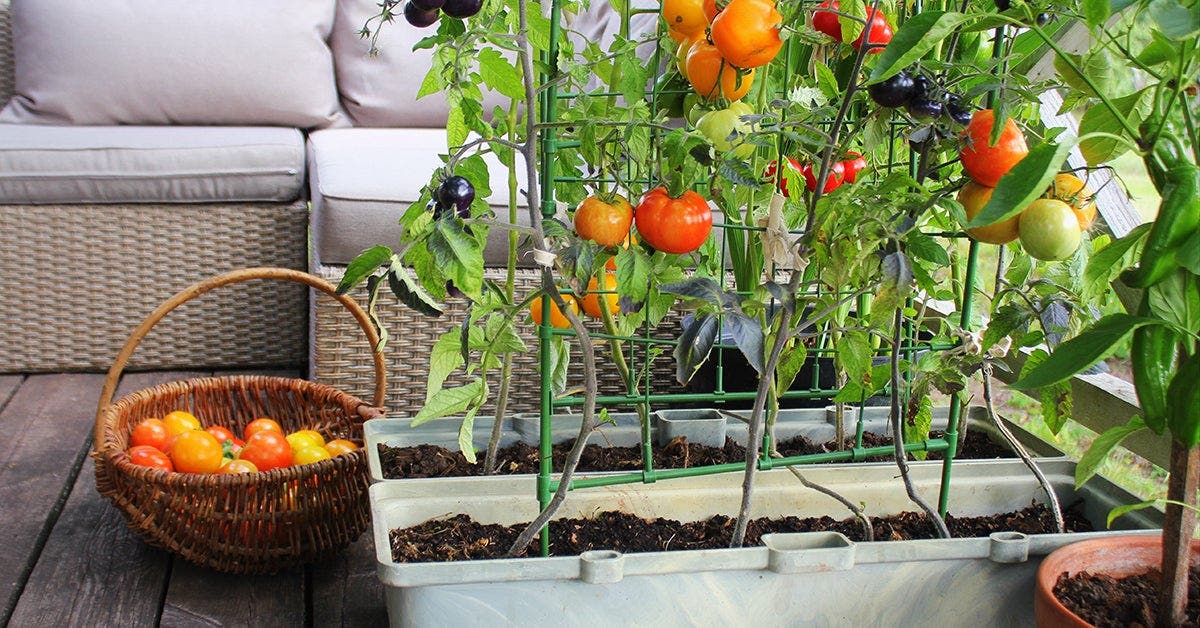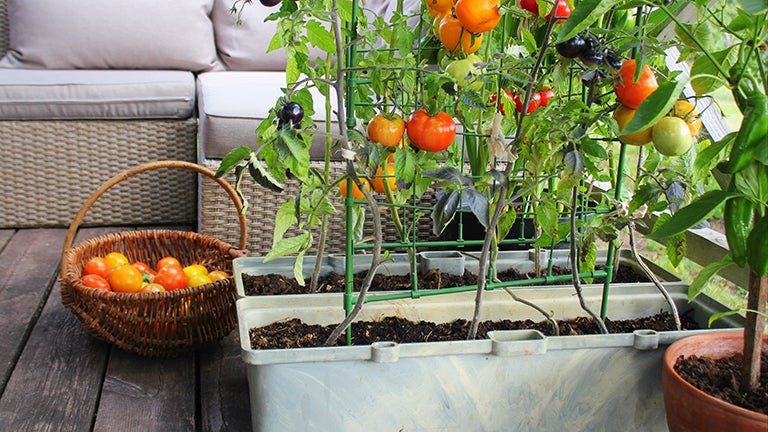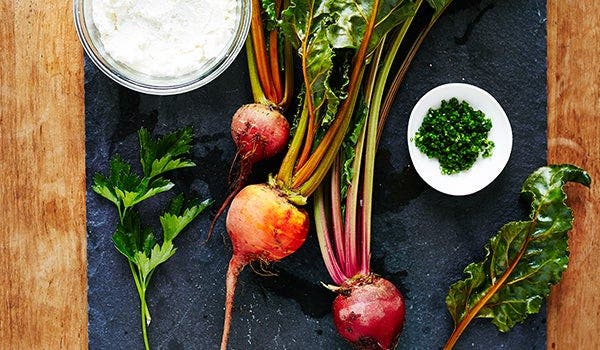How to Start a Vegetable Garden Pretty Much Anywhere


Looking for a hands-on home project to feed your soul and shake up your salad game? Container gardening could be your calling.
You don’t need to be an agricultural pro to grow your own food. Heck, you don’t even need land, says Erin Schanen, a gardening expert in Wisconsin and founder of The Impatient Gardener YouTube channel.
“Container gardening is low-commitment, it’s low-cost, and almost anybody can do it,” she tells WeightWatchers®.
Roll up your sleeves and clear a spot on your sunny balcony, backyard deck, or windowsill. With a few basic supplies and a little know-how, you soon could be growing fresh, delicious picks such as herbs, beans, peppers, cucumbers, tomatoes, and more.
6 things you need to start a container garden
1. A container—almost any kind
Sure, you could invest in a fancy gardening set-up, complete with self-watering pots and other gizmos. But such purchases rarely are necessary. “You can plant in pretty much anything,” Schanen says.
Just two key requirements: Containers for veggie and herb gardens should be at least 9 inches deep, to give roots room to grow. Containers also should have at least one bottom drainage hole of about ½ inch in diameter (or a combo of smaller holes), to prevent excess water from pooling and harming the plant.
Beyond that, almost anything goes, Schanen says—think, milk jug with the top cut off or a clean paint bucket. She’s even been known to use an old laundry basket lined with burlap to keep the soil contained. Use a box cutter or drill to carefully create drainage holes if needed. And once you start planting, be sure to keep a dish or pan underneath to catch water and debris.
When in doubt, choose larger containers over smaller ones, Schanen says. Smaller pots require more frequent watering (more on that in a sec), which can become time-consuming.
For a more specific sense of depth requirements, the gardening-education nonprofit Grow Pittsburgh offers the following guidelines.
Plants that need at least 9 inches of soil depth:
- Beets
- Leafy greens such as spinach, Swiss chard, and lettuce
- Herbs
- Onions
Plants that need at least 12 inches of soil depth:
- Cherry and patio tomatoes
- Peas
- Peppers
- Broccoli
Plants that need at least 18 inches of soil depth:
- Beans
- Full-size tomatoes
- Cucumbers
As with containers, Schanen likes being thrifty with tools. An old serving spoon works as well as a trowel, and almost any vessel will do for watering.
“I have a glass pitcher that I got at Goodwill—one that’s meant to be used as a water pitcher on a table,” Schnanen says. “That’s what I use to water plants.”
2. This simple soil combo
Who knew dirt was so diverse? Browse the soil selection at your nearest gardening or home-improvement retailer, and you’d be forgiven for feeling overwhelmed. There’s topsoil, manure, soil for in-ground use, soil for trees and shrubs. What even is “turf-building soil”?
Don’t worry about those, Schanen says: What you want is potting mix (sometimes sold as potting soil), plus a bag of compost.
Potting soils are distinguished by their relatively low densities, Schanen says. Bags generally feel light for their size.
“That means that there’s going to be better drainage there,” she explains. The airy soil also allows roots to push outward and establish themselves.
As for compost, it’s rich with nutrients that help herb and veggie plants thrive.
When preparing your pots, fill with ⅔ potting mix and ⅓ compost, then mix to combine, Schanen says.
3. A few hours of sun each day
Before you plant anything, Schanen encourages new gardeners to find their light. The amount of sun available to your plants determines what you can grow. Take a day to observe your garden’s future home—whether it’s a balcony, backyard deck, or sunroom—and note how solar rays strike.
Some plants do best in full sun, which Schanen defines as “eight hours a day, with almost no shade except for a little bit in the morning or evening.” Sun-loving plants include tomatoes, peppers, cucumbers, zucchini, and beans.
Still, plenty of veggies and herbs grow in indirect sun or partial shade—meaning just three hours or so of direct sunlight a day. Some lower-light options recommended by The Old Farmer’s Almanac include lettuces, carrots, beets, cilantro, and parsley.
Schanen is especially loving home-grown lettuces during this national moment. “Those leafy greens don’t last very long in our refrigerators,” she says. “So if we’re trying to reduce trips to the grocery store, these are things you can grow and just pick when you need them.”

4. Something to grow
You have two options for bringing up plant babies: starting with seeds or seedlings.
Seeds might be easier to source because they ship easily through the mail from online retailers. Plus, watching seeds sprout can be a fun activity for kids (or for anyone) who is in the grips of cabin fever. Just enfold the seeds in a wet paper towel, keep the towel moist, and check on the seeds every day. When roots start to snake out, rejoice! Then it’s time to pop those seeds into soil. Whether you plant intact seeds or sprouted seeds, follow packet directions for best results.
Seedlings—young plants that require transplantation into a larger pot—are a bit more delicate and trickier to transport, Schanen says. But they can be useful for gardeners living in cooler northern climates, where plants may take longer to bear fruit and would benefit from a head start, Schanen says. (Hey, they don’t call her The Impatient Gardener for nothing.)
Many garden centers currently allow customers to order seedlings online or over the phone, then pick up the plants curbside—just call and ask, Schanen says.
5. A bit of watering wisdom
Wondering whether your plants are thirsty? The poke test is a good way to find out, Schanen says. Gently stick your pointer finger into the soil up to your first knuckle. If the soil feels dry, your plant probably needs a drink, she says. If it’s damp, your plant is good for the moment.
To water your container garden, slowly pour plain water onto the soil and watch below: You’ll want to stop as soon as water starts pooling in the pan or plate beneath the container. Then gently tip any excess water out. Plants may need watering anywhere from once a week to once a day depending on season, sun intensity, air temperature, and container size. Check on them regularly until you get a sense of their hydration needs.
6. A love of the long game
As in all areas of life, container gardening comes with few guarantees—and not every plant is going to yield a bumper crop of deliciousness. Regardless of how many tomatoes ultimately ripen on your vine this season, Schanen encourages newbie gardeners to focus on the restorative pleasures of process over product: the quiet rituals of digging, nurturing, and watching: “There is something extraordinarily satisfying about that, and very calming,” she says.
--
Heather Boerner is a freelance health journalist and gardener in Pittsburgh.
--
This article was reviewed for accuracy in July 2021 by Stephanie L. Fitzpatrick, PhD, senior manager for multicultural programs at WW. The WW Science Team is a dedicated group of experts who ensure all our solutions are rooted in the best possible research.
